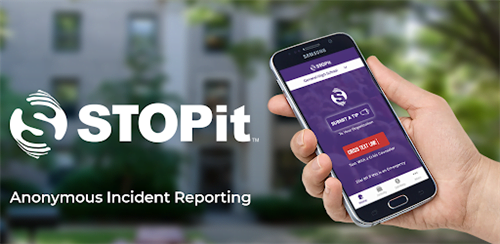
In an age where bullying has extended its reach from playgrounds to digital platforms, the role of technology for bullying prevention in schools is more crucial than ever. This article aims to explore the various ways technology can be harnessed to combat bullying effectively. We will delve into the types of bullying, the role of technology in prevention, and the specific systems, products, and services designed to help schools tackle this pervasive issue. The safety and well-being of our students are non-negotiable; immediate action is imperative.
The Scope of the Problem: Why Technology for Bullying Prevention in Schools is Essential
Bullying is a pervasive issue that affects millions of students each year. According to StopBullying.gov, parents, school staff, and other caring adults play a role in preventing bullying by helping kids understand what bullying is and how to stand up to it safely (StopBullying.gov). However, traditional methods are often insufficient in the digital age. Cyberbullying has added a new layer of complexity to the problem, making the role of technology for bullying prevention in schools more critical than ever.
Types of Bullying: Understanding the Many Facets
Before diving into technological solutions, it’s essential to understand the types of bullying that students may encounter:
Physical Bullying: The Tangible Threat
Physical bullying is perhaps the most traditional and easily recognizable form of bullying. It involves physical actions such as hitting, pushing, or any form of physical intimidation. The aim is often to establish a power dynamic, where the bully asserts dominance over the victim. Physical bullying can lead to both immediate and long-term physical injuries, and it can also have a profound impact on the victim’s mental well-being. Schools have a responsibility to maintain a safe environment, and addressing physical bullying is a critical part of that obligation.
Verbal Bullying: The Power of Words
Verbal bullying may not leave physical scars, but its psychological impact can be just as damaging. This form of bullying includes name-calling, insults, taunting, and even verbal threats. The words used in verbal bullying are often aimed at demeaning the victim based on their race, religion, gender, or other personal characteristics. The impact can lead to low self-esteem, academic challenges, and mental health issues. Given its less visible but deeply damaging nature, verbal bullying requires serious attention from both educators and parents.
Social Bullying: The Invisible Wounds
Also known as relational bullying, social bullying is a more covert form of bullying that aims to damage someone’s social relationships or social standing. This can include spreading rumors, intentionally excluding someone from a group, or embarrassing someone in public. While it may not have immediate physical consequences, social bullying can lead to long-term psychological harm, including feelings of isolation and severe emotional distress. Schools need to be vigilant in identifying signs of social bullying, as it often happens in less visible spaces like online platforms or during social events.
Cyberbullying: The Digital Danger
Cyberbullying is a modern form of bullying that takes place online, often through social media platforms, emails, or text messages. This form of bullying can include spreading rumors, posting hurtful messages, or sharing private information to embarrass someone. The anonymity provided by the internet often emboldens cyberbullies, making it a particularly insidious form of bullying. The impact can be devastating, leading to severe emotional trauma and, in extreme cases, even suicide. The role of technology for bullying prevention in schools is particularly crucial in combating cyberbullying, given its digital nature.
By understanding the various types of bullying in-depth, schools can better tailor their prevention strategies, including the use of technology, to address the specific challenges each type presents.
Technological Solutions: Products and Services for Bullying Prevention
When it comes to using technology for bullying prevention in schools, several products and services can make a significant impact:
Anonymous Reporting Systems

Platforms like STOPit allow students to anonymously report bullying incidents, making it easier for schools to take action (STOPit).
AI Monitoring
Companies like Gaggle use artificial intelligence to monitor students’ online activities for signs of bullying or self-harm, providing an extra layer of protection (Gaggle).
Educational Software
Programs like BrainPOP offer educational modules on bullying prevention, helping to educate students on the importance of empathy and respect (BrainPOP).
Parental Control Apps
Apps like Qustodio allow parents to monitor their children’s online activities, providing an additional safeguard against cyberbullying (Qustodio).
Best Practices: Implementing Technology for Bullying Prevention
- Comprehensive Education: Use educational software to teach students about the consequences of bullying and the importance of empathy.
- Regular Monitoring: Utilize AI-based monitoring systems to keep an eye on students’ online activities and identify potential issues before they escalate.
- Encourage Reporting: Implement anonymous reporting systems to make it easier for students to report bullying incidents.
- Parental Involvement: Encourage parents to use control apps to monitor their children’s online behavior.
- Staff Training: Educate staff on how to use these technological tools effectively for bullying prevention.
Conclusion: The Imperative of Technology for Bullying Prevention in Schools
The issue of bullying in schools is not one that can be swept under the rug; it demands immediate and effective action. Leveraging technology for bullying prevention in schools is not just an option; it’s a necessity. Schools that fail to implement these technological solutions are doing a disservice to their students and staff. With a range of products and services available, there is no excuse for inaction. The time to act is now; the well-being of our students depends on it.
